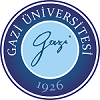
Send us your opinions, requests and evaluations.
FLUENCY DISORDERS (Stuttering, Neurogenic stuttering, Cluttering )
In this unit, counseling, evaluation and therapy services are provided to individuals of all ages who have fluency problems during speaking.
Cluttering: It is defined as an irregular and abnormal speed of speech. Problems such as syllables, rolling the word, and faulty production of speech sounds can be seen in people with fast distorted speech.
Stuttering: Stuttering, which has various definitions, can be defined as disruption of speech flow and/or rhythm.
LANGUAGE DISORDERS
Developmental language delay/ disorders (DLD)
Developmental language disorder, or DLD for short, is a hidden but very common condition that means a child has difficulty using and/or understanding language. Children with DLD have language abilities that fall behind those of other children their age, even though they are often just as smart.
Specific language impairment (SLI) is diagnosed when a child's language does not develop normally and the difficulties cannot be accounted for by generally slow development, physical abnormality of the speech apparatus, autism spectrum disorder, apraxia, acquired brain damage or hearing loss. Twin studies have shown that it is under genetic influence. Although language impairment can result from a single-gene mutation, this is unusual. More commonly SLI results from the combined influence of multiple genetic variants, each of which is found in the general population, as well as environmental influences.
SPEECH SOUND DISORDERS
In this unit, counseling, evaluation and therapy services are provided to individuals of all ages who have speech sound problems.
Dodd (2005) categorizes speech sound disorders under five subtypes: articulation disorder, delayed phonological acquisition, consistent deviant disorder, inconsistent deviant disorder, and other (including dysfluency, dysarthria, and apraxia of speech).
CLEFT LIP AND PALATE
Cleft lip and cleft palate, also known as orofacial cleft, is a group of conditions that includes cleft lip, cleft palate, and both together. Cleft lip and palate occurs in about 1 to 2 per 1000 births in the developed world. Cleft lip is about twice as common in males as females, while cleft palate without cleft lip is more common in females.
In this unit, we provide counseling services to families who have children with cleft lip and palate since pregnancy. Services are carried out to prevent developmental language delays/disorders and to treat speech related problems in this population.
The articulatory structures such as lips, hard palate, soft palate, teeth, and nose may be effected which may cause diminished communication skills. On the other hand, resonance disorders like hypernasality, hyponasality, nasal emission, etc. can also be observed in this group. Speech and language therapist are the major member of team that manage the resonance disorders. The success of speech therapy in cleft lip and palate depends on a multidisciplinary teamwork consisting of plastic surgeon, otolaryngologist, orthodontist, audiologist, psychologist, and speech and language therapist.
APHASIA
What is Aphasia?
It is a language problem that usually caused by the damage of the left side of the brain and results in speaking, listening, reading, and writing difficulties. Every year, thousands of people in our country experience aphasia problems as a result of many diseases such as stroke, brain tumors, traumatic brain injuries and progressive neurological problems. To cope with this problem, we need to know what it is, its causes, signs, and symptoms. Aphasia occurs in approximately 30% of events that result in brain damage.
Signs and Symptoms
Treatment
Treatment should be started as soon as possible. The treatment is carried out by the speech and language therapist, and the content and duration of the treatment program vary according to the patient. In order to get fast and effective results, active participation of the family in the treatment program should be encouraged.
MOTOR SPEECH DISORDERS
What is Dysarthria?
In order to speak, we need the tongue, lips, face, throat and respiratory muscles to work together and in a coordinated manner. If there is incoordination in these muscles, problems may occur in speech production. Dysarthria happens when you have weak muscles due to brain damage. It is a motor speech disorder and can be mild or severe.
Causes
Brain damage causes dysarthria. It can happen at birth or after an illness or injury. Anything that causes brain damage can cause dysarthria, such as:
Treatment
Your work with the SLP will depend on the type of dysarthria you have and how severe it is. You may work on:
What is Apraxia?
Apraxia of speech is a neurologic speech disorder that reflects an impaired capacity to plan or program sensorimotor commands necessary for directing movements that result in phonetically and prosodically normal speech (Duffy, 2013).
Signs and Symptoms
Causes
Treatment
After detailed evaluations, patients with apraxia are determined by the speech and language therapist. A therapy program is prepared and implemented in line with the purposes such as the correct use of structures involved in speech mechanism, training the muscles involved in voice production, and providing the appropriate speed and rhythm for speech. In case of need, alternative communication methods are provided to the patient by using gesture-mimic, sign, writing or computer-aided programs.
For clinical evaluation, intervention sessions or more information, please apply to our Secretariat of the Department of Speech and Language Therapy.
Department Secretary: Ceren Ay
Contact Number: 0312 216 26 24
https://sbf-dkt.gazi.edu.tr/view/page/278972

Send us your opinions, requests and evaluations.